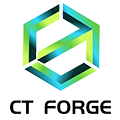3D Printing Plays a Key Role in Large Forgings
Since coming out, 3D printing has been widely applied in aerospace, defense industry and manufacturing. 3D printing is more highlighted especially in research and application of high-end products, having already shown great advantages and technological achievements in various aspects. However, 3D printing has obvious shortcomings in investments, application, development and research in large forgings manufacturing while the high-end technology has wide prospect in traditional manufacturing. Particularly, the whole world is advocating energy-saving and environmental green development at full blast, having caused impact on the development patterns of traditional manufacturing having high energy consumption, high pollution and low efficiency. The advantage of rapid prototyping is more prominent.
Large forgings manufacturing is a quite special industry. It is not only the key industry in Chinese economical construction and development, but also the base of Chinese important equipment manufacturing. It is a necessary industry for Chinese defense construction. It is also an indispensible industry having closed relationship with national security and economic artery. It is a part of state capacity. The development of large forgings is an important symbol measuring comprehensive national power. Large forgings are used as basic parts in power, metallurgy, petrochemical industry, ship building, railway, mining, aviation, military industry and engineering, having strong economic motion and large radiation. It is an indispensible link in industrial chain. As a key part of important equipment, large forgings cannot only be used as spare parts of large equipment, but also be used as stressed member, such as rack of rolling mill, supporting roll, working roll, rotor in power turbine, macroaxis and runner hub. As base industry, large forgings have extremely high demands. However, utilization of materials used for manufacturing large forgings is still fall behind than world advanced level. The utilization of materials used for forgings in China is 50%~55% while Korea is 60~65% and Japan is 70~75%. The utilization of materials has become a bottleneck for large forgings manufacturing. Meanwhile, the forming process of a large forging is quite complicated and fussy.
3D printing is a technology that uses digital model file as base, using powder metal or plastic and other bonded materials, structuring object through printing layer by layer. 3D printing can model through computer modeling software or use existing model, such as animal, auto parts and miniature building, then, the model is stored in SD card or USB flash disk and transmitted to 3D printer. After setting, the printer can pint the model. The working principles of 3D printer are the same as traditional printer, consisting of control components, mechanical components, printing head, consumables and media. 3D printer just only transfers traditional two dimensional printing to three dimensional printing. So, the most highlighted advantage of 3D printing is that it can directly manufacture parts having any shapes through computer graphic data without any mechanical processing and molds, highly reducing development period of product, improving efficiency and decreasing cost. The cost is decreased through abandoning production line, significantly reducing materials wasting. At the same time, 3D printing also reduces remainders having no relations with functions caused by design and production, making the parts more elaborate and lighter. Compared with parts made by machine, the printed parts are lighter by 60% and have similar performances. 3D printing is rapid prototyping, eliminating tool processing, machining and hand finishing, reducing manpower, production cycle, waste of natural resources and pollution caused by traditional manufacturing. However, 3D printing in China has difficulties on materials, equipment and application, having higher cost. At present, 3D printing is mostly used in experiment. Large scale application still needs time. Now, 3D printing in China is mainly used for product design, rapid tooling, aviation and medicine. Among that, consumer electronics, auto and medical respectively account for 20.3%, 19.5% and 15.1%. 3D printing of titanium alloy and M100 steel has already been used for manufacturing J-15 carrier-based aircraft. On the contrary, investment and research of 3D printing in traditional large forgings manufacturing attract insufficient attraction.
With application of 3D printing and extremely large technical advantage, the third Industrial Revolution may come. As the basic industry of industrial equipment, the key role of large forgings is implied. During the updating of Chinese manufacturing, whether 3D printing can lead Chinese manufacturing, promoting China to change from manufacturers to manufacturing power, realizing overturning reformation and occupying opportunities in the future industrial equipment market is worth for research. At the same time, 3D printing shows great potential in environmental protection for the world in pursuit of energy conservation and emission reduction, cost reduction and synergistic effect, providing a good foundation for realizing ecological environmental industrial production. Although large forgings have simple structure, they still have high weight, large volume and high requirements for performance. As a new industry, 3D printings still has difficulties in the development of metal powder, large printing equipment and auxiliary equipment. It is far away from realizing industrial promotion and application.


